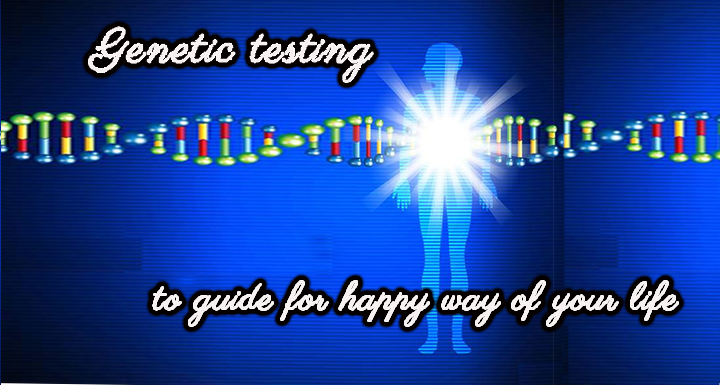Hi how are you doing? Today’s topic is “genetic testing”, have you ever heard of that? or have you ever thought you’d like to have it a try?
Gene-testing technology has dramatically advanced in recent years, and it now provides a simple and relatively affordable way to test the genetic makeup of individuals.
This time, I have undergone a genetic test and I’d like to talk to you through my experiences.
Contents
What’s “genetic testing”?
What genetic analysis mostly can provide information on disease risk and constitutional tendency.
You can collect cells or salives and read DNA information to know genetic information about susceptibility to disease and constitution
To be more specific, this test provides information on individual constitution and disease risk by reading and analyzing genetic information contained in genes. Genetic information can be obtained by analyzing DNA.

DNA can be extracted from saliva in the test, and the analysis technology uses a technology called DNA chip that can detect a huge amount of genetic information.
Genetic analysis is like knowing a part of the blueprint of your body. Your genes are based on 1/2 of your father’s genes and 1/2 of your mother’s genes.
It is said that the gene, which is the blueprint of one’s body given to a father or mother, basically does not change from birth to death.
By genetic analysis, it is possible to know genetic information about the constitution such as the tendency to gain weight and the risk of developing diseases such as cancer and diabetes. So you can also check what you can do to prevent the disease.
What do we know from genetic analysis, then?
Genetic testing involves examining your DNA, the chemical database that carries instructions for your body’s functions.
Genetic testing can reveal changes (mutations) in your genes that may cause illness or disease. Although genetic testing can provide important information for diagnosing, treating and preventing illness, there are limitations.
For example, if you’re a healthy person, a positive result from genetic testing doesn’t always mean you will develop a disease. On the other hand, in some situations, a negative result doesn’t guarantee that you won’t have a certain disorder.

Talking to your doctor, a medical geneticist or a genetic counselor about what you will do with the results is an important step in the process of genetic testing.
What are the examples of using the results of gene analysis in your daily life?
In order to improve your life for the sake of health, it is possible to have a strong motivation to know the information of your natural constitution.
Although testing institutions provide information on genetic factors, lifestyle factors and other environmental factors also have a large impact on disease risk and constitution. For example, the risk of lung cancer is greatly increased by environmental factors such as smoking.
If you know the future risk tendency by genetic testing, you may sometimes be surprised by the unexpected result, but the onset of diseases such as lifestyle-related diseases is not confirmed only by genetic factors.
However, there are many things that are likely to be avoided by improving lifestyle habits and efforts for prevention.
Even if the disease risk is high, the onset of diseases such as lifestyle-related diseases is likely to be avoided through efforts to improve the environment and prevent diseases. Get more information about your body and use it as a life tip.

How it works?
It’s just saliva. No blood. No needles
Saliva (spit) can be used for paternity testing, but there are some definite pros and cons: PROS: It is an excellent source of testable genetic material and a large amount of DNA can be collected in a relatively small sample of saliva. It is non-invasive, meaning there are no needles involved and no discomfort.
The saliva samples contain a significantly lower percentage of amplifiable human DNA (37.3%) when compared with blood samples. Interestingly, saliva-derived DNA demonstrated a significantly lower genotyping call rate on the DMET array when compared with blood-derived DNA.
The bottom line is that you get highly reliable paternity test results from both.
No matter which method is used , a DNA sample from your mouth is just as accurate as one from your blood sample when processed by an experienced testing laboratory.
Your saliva contains a veritable mother lode of biological material from which your genetic blueprint can be determined.
For example, a mouthful of spit contains hundreds of complex protein molecules — what scientists call enzymes — that aid in the digestion of food.
So yes, it is definitely possible for two siblings to get pretty different ancestry results from a DNA test.
Even when they share the same parents. DNA isn’t passed down from generation to generation in a single block. Not every child gets the same 50% of mom’s DNA and 50% of dad’s DNA.
These articles quoted from “23andME”
All from home. No blood. No needles. Just a small saliva sample.
No.1 Order
Choose from our Health + Ancestry or Ancestry + Traits services. Your saliva collection kit is the same for both services and typically arrives within 3 to 5 days. Express shipping is available.
No.2 Spit
Follow kit instructions to spit in the tube provided — all from home. Register your saliva collection tube using the barcode so we know it belongs to you, and mail it back to our lab in the pre-paid package.
No.3 Discover
In approximately 3-5 weeks, we will send you an email to let you know your reports are ready in your online account. Log in and start discovering what your DNA says about you.
What’s the current situation and problems of DTCGT (Direct-to-Consumer Genetic Testing) in Japan?
In addition to genetic testing at medical institutions, companies now provide a DTCGT (Direct-to-Consumer Genetic Testing) system, which allows consumers to undertake a genetic test directly without visiting a medical institution, resulting in an expansion of the available services that predict potential diseases.
Today, most DTCGT tests are not performed under the supervision of a registered physician or trained medical professional, which is both a medical and an ethical issue, and there is no suitable established regulation for DTCGT testing.
Here we compare genetic testing rules and regulations in Japan, the U. S. and Europe (the UK, Germany, and France).
We note that there are established laws and regulations governing the DTCGT system in most western countries, whereas in Japan there is guidance but no rules or regulations.
To clarify the current situation in Japan, we surveyed the organizations that use the DTCGT system both in person and over the internet. We found that most of the 112 organizations using the system did so without supervision of a registered physician or trained medical professional supervision.
We also identified genetic-testing results diagnosing disorders that actually needed suitable medical gene counseling.
We conclude that the timely implementation of appropriate laws and regulations is necessary to solve these issues arising from the rapid expansion of DTCGT use in Japan.
Blogger’s case
This is a part of the test report to me.

Here’s a report of genetic analysis from Euglena company after I sent to the company with my salive.
First of all, it is divided into 5 categories, 1) health risk, 2) constitution, 3) ancestry analysis, 4) parts, and 5) list.
Then, 1) health risk which has 12 kinds as below,

Then, Circulatory system ・Heart which has 22 items as below,
And when I open the “view details” of an aortic aneurysm that is high in pink,
In addition, glaucoma and peripheral arterial disease are also high health risks, and in fact, ocular pressure is now quite high, and even an ophthalmologist threatens me to have glaucoma as it is.
So, the item examined was 389 in total.
Well, I hope it would be beneficial for you.
Finally we have” STOP Cancer with one drop of urine or blood、Preventive medicine with early detection” to be well-worth visiting, thanks










